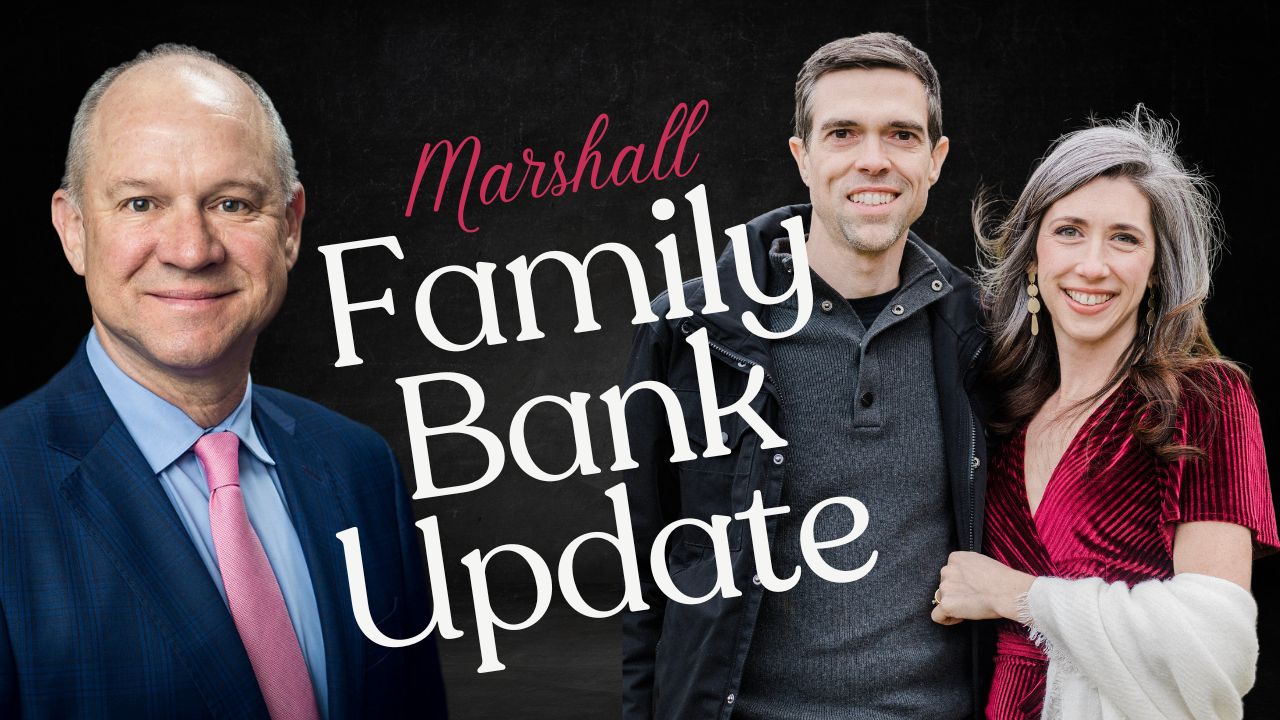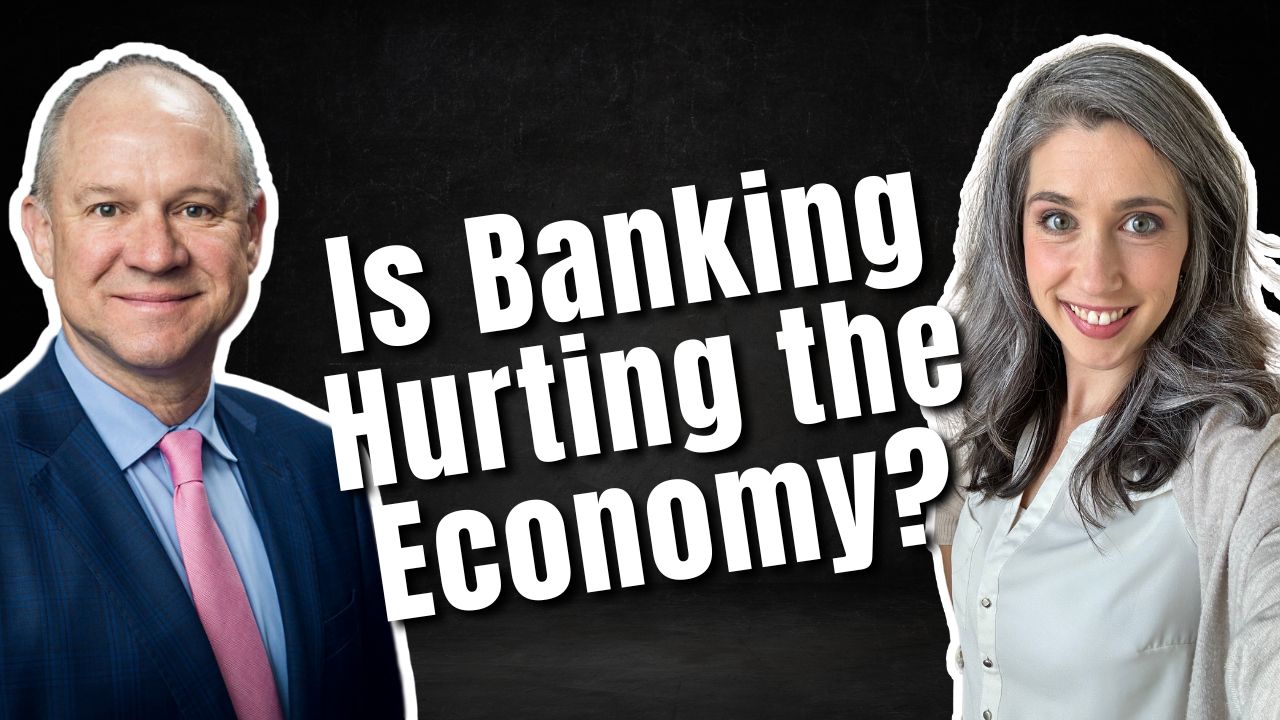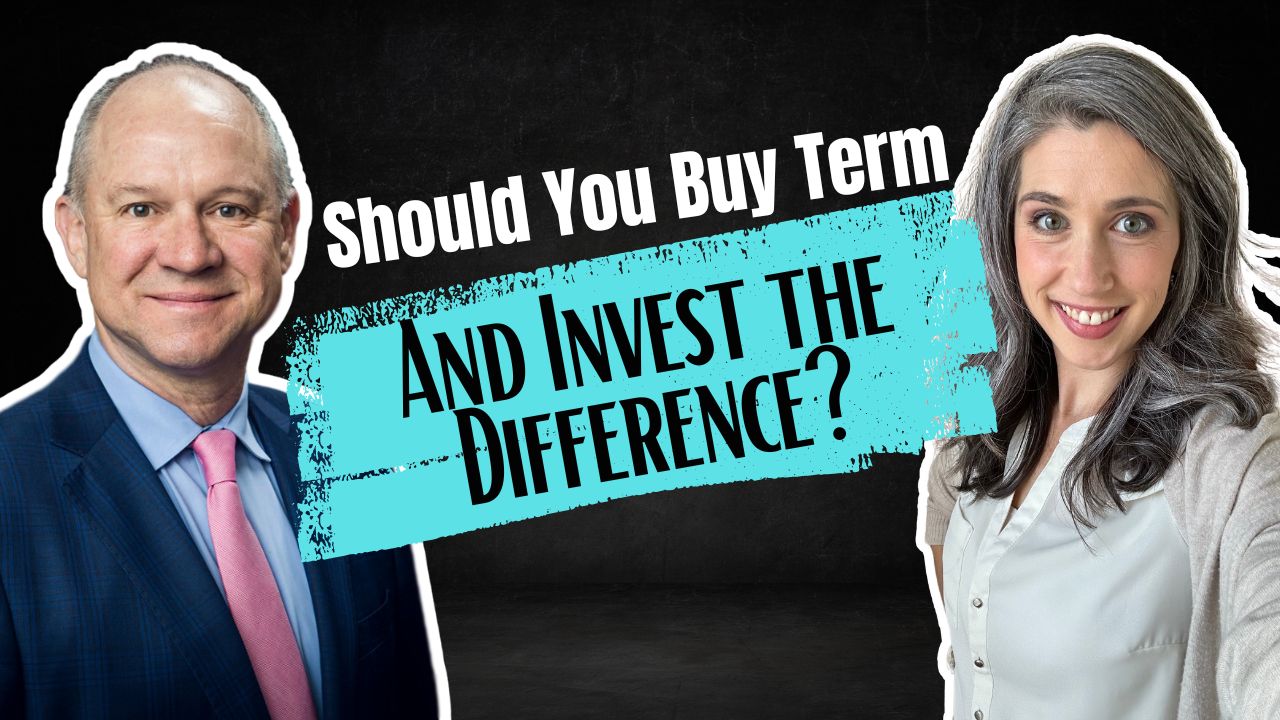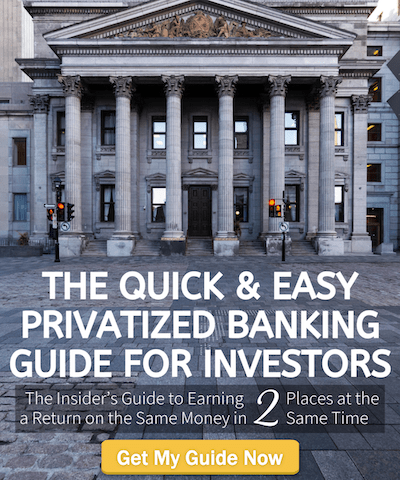
Marshall Family Banking System, Pt. 4
Want to see the real-time historical performance of the Infinite Banking Concept?
Usually, when you hear about policy performance, it’s from looking at illustrations. But illustrations aren’t “performance,” they are projections of future growth, based on current dividends and interest. That’s why we love getting the opportunity to share the actual historical performance of Infinite Banking policies, and our philosophy and vision for building our family banking system with multiple policies.
Today, we’re discussing the actual capitalization, growth, dividends, cash values, and death benefit of our Family Bank. Our conversation shifts to the personal legacy we’re crafting through our family banking system, a journey that began 11 years ago with our first whole life insurance policy. We recount the pivotal decisions that shaped our financial foundation, such as transitioning our assets from precious metals to a more liquid form.
We delve into the significance of long-term planning and how our present actions are intended to bless generations to come. Engage with us and consider how you might shape your own infinite banking story.
Lastly, we explore the strategic intricacies of life insurance policies, emphasizing the importance of designing a policy to allow for as large of premiums for as long as possible.
Podcast: Play in new window | Download (Duration: 46:23 — 53.1MB)
Subscribe: Apple Podcasts | Spotify | Android | Pandora | RSS | More
Table of Contents
Prior Episodes In This Series
- Part 1 Mar 2022: Why We Started a New Life Insurance Policy
- Part 2 Oct 2022: Adding a Second Whole Life Policy
- Part 3 Feb 2023: Capitalization Phase – End Of Year Update
Structure of the Family Banking System
In this episode, we take a look at the annual statements for our family banking policies, and the components to be aware of. It’s important to us that we share what we’re doing with our family so that you can see proof of the Infinite Banking Concept in action. In the first policy (listen or watch the full episode to get the details on our 2nd policy as well) we examine, our total premium is $20,000. However, you can break down that premium and see that there are several components at “work” in our premium.
The base premium is the minimum amount of premium that must be paid every year to keep the policy current. This is actually only a little more than $7,000. The rest of the 20k premium is composed of Paid Up Additions (PUA) and other riders. One such rider is called “waiver of premium.” This rider can only be applied to the base premium, and it protects the policy owner from paying premiums in the event of a disability that prevents working. There is also a term insurance rider on the policy, with its own waiver of premium rider.
The term insurance rider lasts for 30 years, and the corresponding death benefit will drop off after that term unless it’s converted to additional life insurance. This conversion option allows us to keep that death benefit if we wish, and build additional cash value after it’s converted to whole life insurance. This is a great way to maximize your death benefit when you’re starting out.
Dividends on the Annual Statement
On our annual summary, you can also see the total accumulated dividend we earned for the year and how it was applied. The line items can get a bit confusing, as it moves between dividends and additional death benefit, but for the year our total dividend was $4,233.15. A large portion of this came from the base policy, while a more significant portion of this came from various PUAs. Our “lifetime” total for dividends earned since 2021 is $7,800.48. So in one year, we earned more dividends than the previous year. This is a testament to the power of compounding interest.
In this section, you can see that the PUAs are also adding about $2 of death benefit for every dollar of premium. If someone in their 20s were to look at their annual statement, they might get $4 of death benefit for every dollar of premium. This is simply because the cost of insurance increases over time. The sooner you begin a policy, the sooner you can lock in your current insurability.
New Illustrations
When you get your annual statement, you also receive a revised illustration. This is like a snapshot in time—it’s going to give you a solid idea of what to expect for the next year, and a very general idea of what will happen over the lifetime of the policy. This is because the illustration assumes the same declared dividend for every year, yet dividends change from year to year. There are also likely to be discrepancies in the illustration vs. reality (though typically minor, and sometimes greater than what’s illustrated).
Once the dividend is applied, all future projections change. In other words, while your illustration gives you a solid picture of your policy’s trajectory, don’t put too much stock in the exact numbers.
The Difference in a Year
Finally, we share a snapshot of our family banking system from December 2022 compared to December 2023. We compare the total premium paid to date, as well as the total death benefit. One of the first results of note is that in a year’s time we paid 50k in total whole life premium, while our total whole life death benefit increased by over 84k. Meanwhile, our total cash value only increased by about 45k. So our family’s coverage and protection is increasing by more than what we’re putting in, while our cash value increase is getting close to matching our premium deposits.
Hopefully, this gives you a good sense of what the capitalization phase looks like. We feel very good about the cash value we’ve accumulated, the habits we’ve supported, as well as the values we’ve instilled in our family. To learn more about how we use this family banking system within our family, check out our Family Summit post.
Book A Strategy Call
Do you want to coordinate your finances so that everything works together to improve your life today, accelerate time and money freedom, and leave the greatest legacy? We can help! Book an Introductory Call with our team today https://themoneyadvantage.com/calendar/, and find out how Privatized Banking, alternative investments, or cash flow strategies can help you accomplish your goals better and faster. That being said, if you want to find out more about how Privatized Banking gives you the most safety, liquidity, and growth… plus boosts your investment returns, and guarantees a legacy, go to https://privatizedbankingsecrets.com/freeguide to learn more.
Fractional Reserve Banking Creates Inflation: Infinite Banking is the Solution
Inflation causes everything to feel more expensive, so what do you do to protect your money from inflation? Today, we’ll explore the link between inflation and fractional reserve banking, and how Infinite Banking is the sound money solution. A thought-provoking journey through inflation, fractional reserve banking, and the revolutionary concept of infinite banking. This episode…
Read MoreBuy Term and Invest the Difference: Here’s What’s Wrong
Are you trying to decide which type of life insurance to buy? You want to protect your family in case something happens, so how do you do it best? Whole life insurance is often rejected as expensive and a poor “investment,” while mainstream opinion leans in favor of the “buy term and invest the difference”…
Read More


